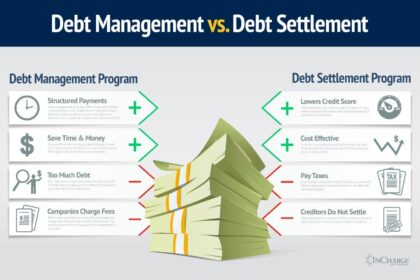In a world where financial landscapes shift as quickly as technology evolves, millennials find themselves navigating a unique set of challenges and opportunities in personal finance. Balancing student loans, rising living costs, and the dream of homeownership all while trying to save for retirement can feel like a daunting juggling act. Yet, amidst these pressures lies a generation that is increasingly resourceful, adaptive, and keen on redefining traditional notions of wealth. This article delves into the essential financial strategies tailored for millennials, empowering them to take charge of their financial futures with confidence and clarity. From budgeting techniques that fit a digital lifestyle to investment opportunities that resonate with their values, let’s explore how this vibrant generation can not only survive but thrive in today’s financial ecosystem.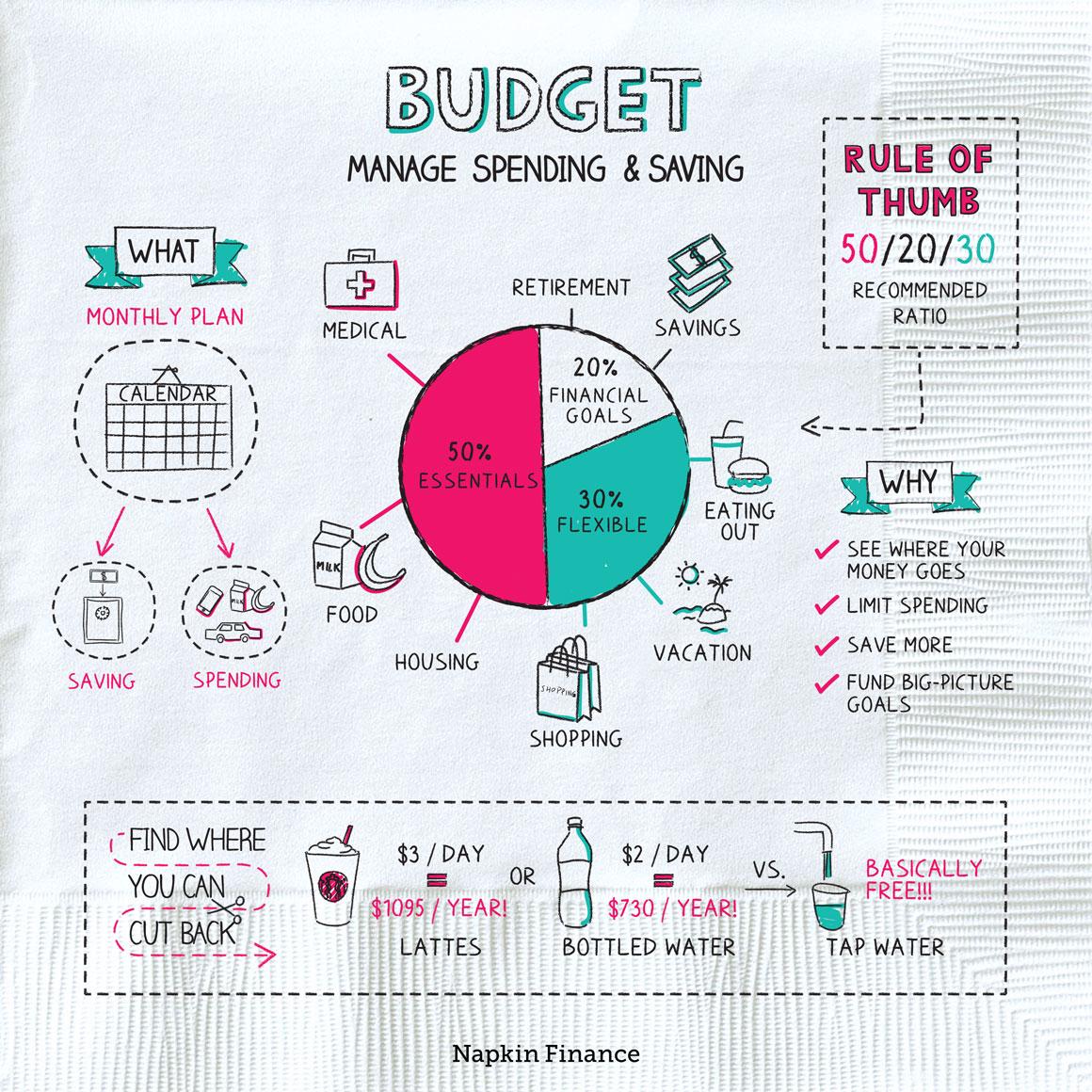
Budgeting Tips
Effective budgeting is the backbone of financial stability and growth, especially for millennials who are navigating a complex financial landscape. Start by establishing a clear picture of your income and expenses. Track your spending for at least a month to identify spending patterns and areas where you can cut back. Tools like apps or spreadsheets can help simplify this process. Consider implementing the 50/30/20 rule, which allocates 50% of your income to needs, 30% to wants, and 20% to savings and debt repayment. This structure not only controls spending but also keeps savings in the forefront, ensuring a healthy financial future.
Another crucial aspect of budgeting is setting measurable and realistic financial goals. Break down your goals into short-term, medium-term, and long-term categories to maintain focus and motivation. For example, you might want to save for a vacation within a year or work towards a home down payment over five years. Visualize your progress with a simple table that outlines your goals, target amounts, and deadlines. This not only keeps your objectives clear but also provides a sense of achievement as you hit each milestone.
| Goal Type | Target Amount | Deadline |
|---|---|---|
| Vacation | $2,000 | 12 months |
| Emergency Fund | $5,000 | 24 months |
| Home Down Payment | $20,000 | 5 years |

Debt Management
Managing debt effectively is crucial for millennials looking to build a solid financial foundation. With student loans, credit card balances, and other financial obligations, it’s easy to feel overwhelmed. However, by implementing mindful strategies, you can take control of your financial future. Consider the following tips:
- Create a budget: Track your income and expenses to understand where your money goes.
- Prioritize debt repayment: Focus on paying off high-interest debts first to minimize costs.
- Consider consolidation: Combining multiple debts into a single loan can often reduce interest rates and streamline payments.
- Automate payments: Set up automatic payments to avoid late fees and improve your credit score.
Additionally, understanding your credit score can empower you to make better financial decisions. Many millennials are unaware of how their credit habits impact overall financial health. Here’s a quick look at some key components:
| Credit Score Factors | Impact on Score |
|---|---|
| Payment History | 35% |
| Credit Utilization | 30% |
| Length of Credit History | 15% |
| New Credit | 10% |
| Credit Mix | 10% |
By keeping an eye on these factors and regularly checking your credit report, you’ll be better equipped to make informed decisions, thus ensuring a stronger financial outlook as you navigate through your twenties and thirties.

Saving for Retirement
When it comes to planning your financial future, starting early with your retirement savings can make all the difference. Every dollar you contribute now can benefit from compound interest, meaning it has the potential to grow significantly over time. Here are some key strategies to help you make the most of your retirement savings:
- Set clear goals: Determine what kind of lifestyle you wish to maintain in retirement and how much you’ll need to save to achieve that.
- Take advantage of employer contributions: If your employer offers a retirement plan like a 401(k), contribute enough to secure any matching funds.
- Diversify your investments: Explore a mix of stocks, bonds, and other assets to balance risk and reward as you build your portfolio.
To illustrate how saving even small amounts can have a significant impact, consider the following table that demonstrates potential growth over time with consistent contributions:
| Annual Contribution | Years Invested | Estimated Total at 7% Interest |
|---|---|---|
| $1,000 | 30 | $94,193 |
| $2,000 | 30 | $188,386 |
| $5,000 | 30 | $470,965 |
Utilizing tools like retirement calculators can also help you stay on track and adjust your savings plan as needed. It’s never too late to start saving, but the earlier you begin, the more your money can work for you in the long run.

Emergency Fund Planning
Planning for emergencies is a crucial aspect of building a secure financial foundation, especially for millennials navigating an ever-changing economic landscape. Establishing an emergency fund not only provides peace of mind but also acts as a safety net against unforeseen circumstances such as job loss, medical expenses, or urgent home repairs. Here are a few key elements to consider when creating your emergency fund:
- Target Amount: Aim to save at least three to six months’ worth of living expenses.
- Accessibility: Keep your emergency fund in a high-yield savings account for easy access.
- Consistency: Automate your savings to ensure you contribute regularly.
When starting your fund, it’s helpful to set short-term milestones that make the process feel achievable. You can track your progress visually with a simple table, breaking down your savings goals over time:
| Month | Savings Goal | Progress Made |
|---|---|---|
| 1 | $500 | $500 |
| 2 | $1,000 | $1,200 |
| 3 | $2,000 | $2,500 |
This clear vision of your milestones can motivate you to stay on track, ultimately leading to a more secure financial future. Remember, the goal is to empower yourself with the knowledge that you are prepared for life’s unexpected detours.
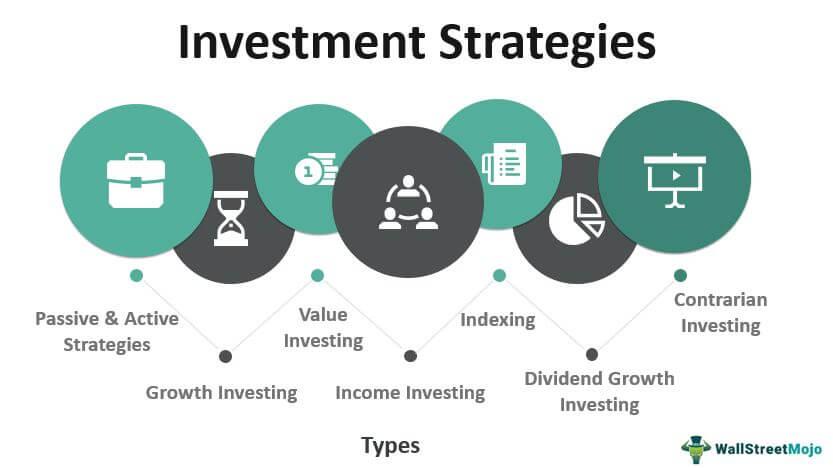
Investment Strategies
For millennials looking to navigate the investment landscape, it’s crucial to adopt diverse strategies that cater to various risk tolerances and financial goals. Start by understanding your investment options, including stocks, bonds, and real estate, as well as emerging avenues like cryptocurrencies and crowdfunding. Each asset class has its own risk-return profile, so consider starting with a balanced portfolio that includes a mix of these options. Here are a few strategies to consider:
- Dollar-Cost Averaging: Invest a fixed amount regularly regardless of market conditions, which can reduce the impact of volatility.
- Index Fund Investing: Opt for low-cost index funds that track a market index for long-term growth potential.
- Sector Diversification: Spread investments across various sectors (e.g., technology, healthcare) to mitigate risk.
Another essential consideration is the composition of your investments over time. As your financial situation evolves, so should your portfolio. Regularly re-evaluate your asset allocation to ensure it aligns with both your risk appetite and investment horizon. The following table outlines a simple framework for assessing your investment style based on your age and risk preference:
| Age Group | Conservative Allocation (%) | Moderate Allocation (%) | Aggressive Allocation (%) |
|---|---|---|---|
| Under 30 | 10 | 40 | 50 |
| 30-40 | 20 | 50 | 30 |
| 40+ | 40 | 40 | 20 |

Stock Market Investing
Investing in the stock market can seem daunting, especially for millennials who may not have experienced a long-term bull market. However, approaching this opportunity with a strategy can provide significant wealth-building potential. To get started, consider focusing on the following essentials:
- Education: Familiarize yourself with market terminology and basic analysis techniques.
- Diversification: Spread your investments across different sectors to mitigate risk.
- Long-term Perspective: Embrace the idea of holding investments through market fluctuations.
- Start Small: Use apps that allow fractional investing to dip your toes in without overwhelming commitment.
Building a solid portfolio involves understanding the types of investments available. Here’s a simple table to illustrate various asset categories you might explore:
| Asset Type | Risk Level | Potential Return |
|---|---|---|
| Stocks | High | High |
| Bonds | Low | Moderate |
| REITs | Medium | Moderate |
| Mutual Funds | Varied | Varied |
By understanding your risk tolerance and investment horizon, you can tailor your investment strategy to suit your financial goals. Remember, the earlier you start investing, the more time your money has to grow!

Real Estate Investment
Investing in real estate can be a powerful strategy for millennials looking to build wealth and achieve financial independence. With a range of options available, from residential properties to commercial real estate, young investors can tailor their approaches based on their individual risk tolerances and investment goals. Consider exploring trusts (REITs), which allow you to invest in property portfolios without the hassle of direct land ownership. This can provide an excellent way to dip into the market while offering dividends that contribute to your cash flow.
When preparing to enter the real estate market, it’s essential to conduct thorough research and understand the key factors that influence property values. Effective strategies might include:
- Location analysis: Investigate upcoming neighborhoods with growth potential.
- Market trends: Stay informed on local market conditions to make informed decisions.
- Financing options: Explore various mortgage rates and investment terms.
- Networking: Connect with local real estate agents and fellow investors for insights.
Ultimately, offers millennials not only an opportunity to generate passive income but also a chance to cultivate a tangible asset that can appreciate over time.
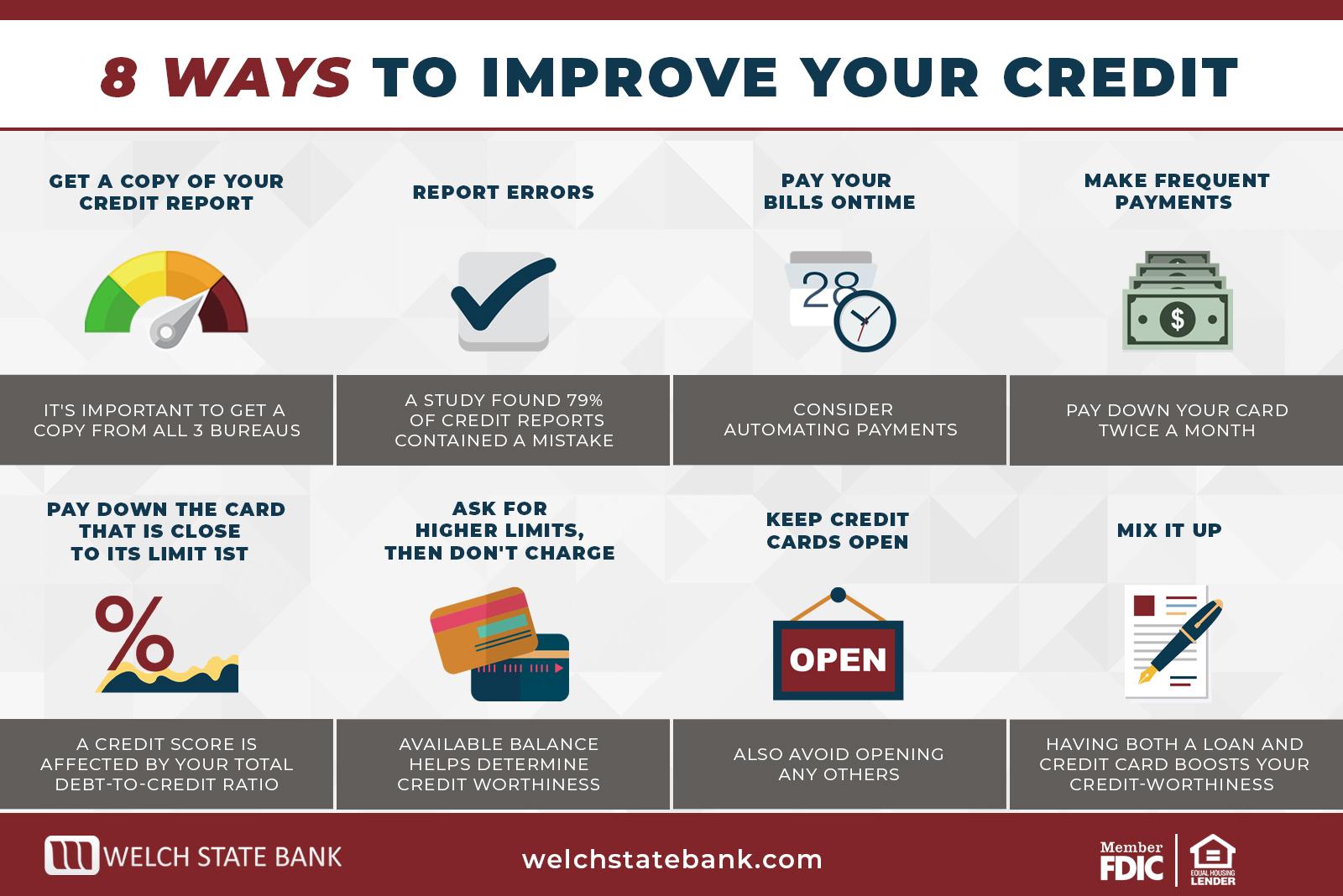
Credit Score Improvement
Improving your credit score is not only essential for securing loans at better rates but also for shaping your overall financial health. To start on this journey, consider the following strategic approaches that can help boost your score over time:
- Pay Your Bills On Time: Late payments can significantly impact your score. Automating your bill payments or setting reminders can ensure you never miss a due date.
- Reduce Credit Card Balances: Aim to keep your credit utilization ratio below 30%. This means keeping your outstanding credit card balances low relative to your total credit limit.
- Limit New Credit Applications: Each time you apply for credit, it can result in a hard inquiry, which may lower your score slightly.
Additionally, reviewing your credit report regularly can help identify errors that may drag your score down. You can obtain your credit report for free from various financial services. Consider the following tips when reviewing your report:
| Action | Benefit |
|---|---|
| Check for Errors | Correcting inaccuracies can raise your score. |
| Track Your Accounts | Monitoring payment history helps maintain good habits. |
| Investigate Unfamiliar Accounts | Identifying potential fraud can prevent score damage. |

Financial Independence
Achieving true freedom from financial constraints is a journey that many millennials are embarking on. This lifestyle shift focuses on building a sustainable future, rather than merely surviving from paycheck to paycheck. The first step towards liberation is to redefine spending habits and prioritize savings. Consider the following practices to enhance financial resilience:
- Create a budget: Track your income and expenses to identify areas for improvement.
- Set financial goals: Whether it’s a vacation, buying a home, or retirement, having clear objectives makes saving more purposeful.
- Invest wisely: Start allocating a portion of your income into stocks, bonds, or retirement accounts to grow your wealth over time.
As you embrace , it’s essential to monitor your progress and adapt your strategies. Consider surrounding yourself with a support system, such as finance-focused friends or online groups, to share insights and keep motivated. Regularly reassess your goals and performance, and remember to celebrate small wins along the way. Here’s a simple way to visualize your progress towards independence:
| Goal | Target Date | Current Status |
|---|---|---|
| Emergency Fund | 12/2024 | 50% Complete |
| Investing in Stocks | 06/2025 | Started |
| Debt-Free | 08/2023 | Achieved! |

Passive Income Streams
Finding ways to generate income without the daily grind of a 9-to-5 job has become increasingly appealing, especially for millennials eager for financial freedom. allow for a more flexible lifestyle while still building wealth. Consider these avenues:
- Real Estate Investments: Rental properties can offer significant returns, and platforms for real estate crowdfunding have made it easier than ever to get involved.
- Dividend Stocks: Investing in companies that pay dividends can provide regular income while allowing your investment to grow.
- Peer-to-Peer Lending: Participate in this modern lending system, where you can earn interest on money lent to individuals or small businesses.
- Digital Products: Create and sell e-books, online courses, or photography; once made, they require minimal effort to maintain.
To illustrate the potential returns of these methods, here’s a simple breakdown:
| Income Stream | Average Annual Return | Effort Required |
|---|---|---|
| Real Estate | 8% – 12% | Moderate |
| Dividend Stocks | 4% – 7% | Low |
| Peer-to-Peer Lending | 5% – 10% | Low |
| Digital Products | Variable | Initial High, then Low |
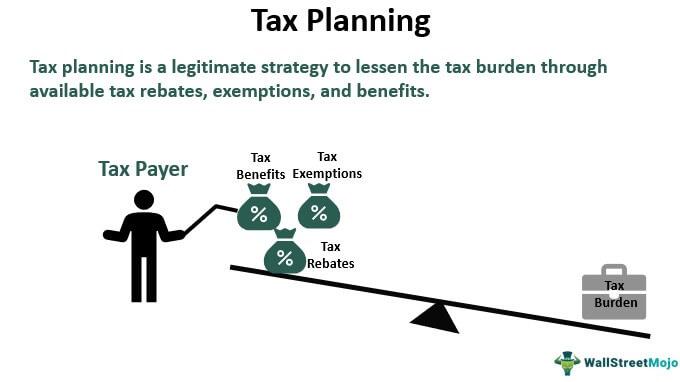
Tax Planning
Tax season can feel daunting, especially for millennials who are navigating financial responsibilities and planning for the future. However, understanding the fundamentals of can significantly reduce your tax burden and optimize your overall financial health. Start by keeping meticulous records of your income and expenses, as this practice not only aids in filing your taxes but also identifies potential deductions. Consider these strategies:
- Maximize Tax-Advantaged Accounts: Contribute to your 401(k) or IRA early and often to benefit from compounding interest while minimizing taxable income.
- Leverage Education Credits: Take advantage of credits like the American Opportunity Tax Credit or Lifetime Learning Credit to alleviate the cost of pursuing higher education.
- Explore Deductions: Look into deductions for student loan interest, home office expenses, or even charitable contributions to lower your taxable income.
Additionally, being proactive about could yield long-term benefits. Take the time to educate yourself on potential changes in tax legislation that could impact you, including updates to tax brackets and available credits. For a clearer overview of tax implications based on income levels, the following table highlights estimated federal tax rates:
| Tax Bracket | Income Range | Tax Rate |
|---|---|---|
| 10% | $0 – $9,950 | 10% |
| 12% | $9,951 – $40,525 | 12% |
| 22% | $40,526 – $86,375 | 22% |
| 24% | $86,376 – $164,925 | 24% |
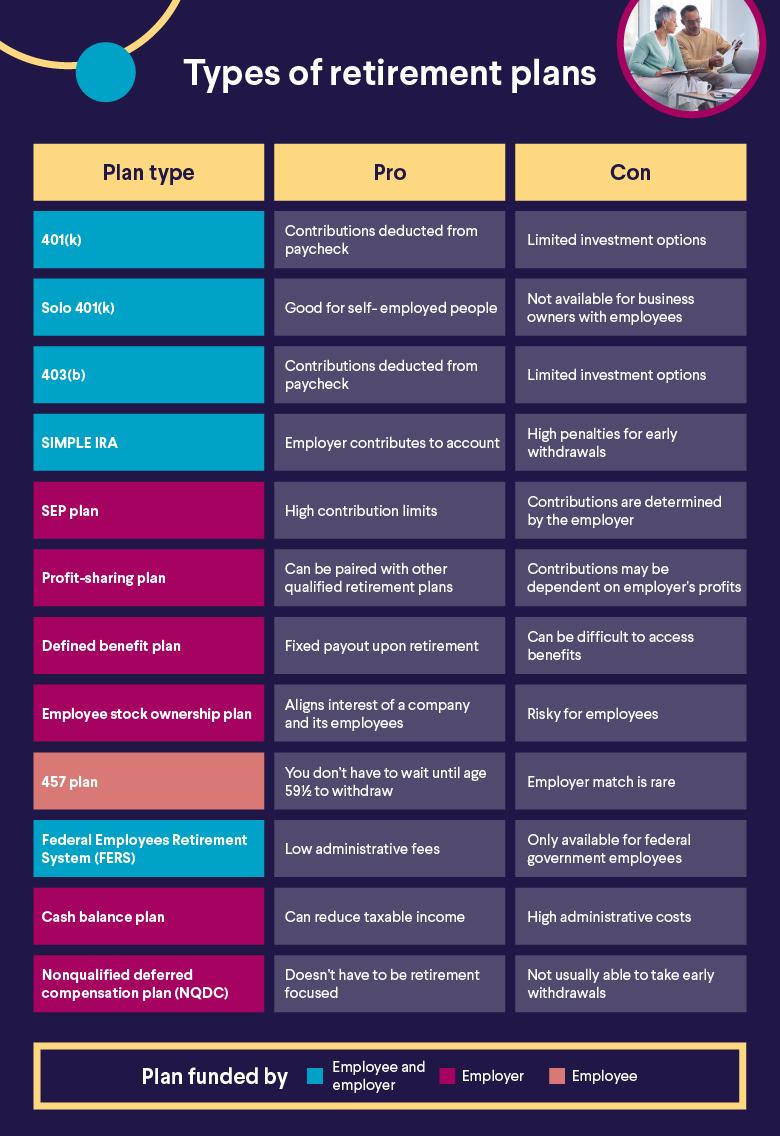
Retirement Accounts (IRA, 401k)
When it comes to building a secure financial future, millennials have a unique set of tools at their disposal. Two of the most powerful components in this toolkit are retirement accounts, such as Individual Retirement Accounts (IRAs) and 401(k)s. These accounts not only help you save for retirement but also offer significant tax advantages. With an IRA, you can choose between a traditional account, which allows for tax-deductible contributions, and a Roth IRA, where you can withdraw funds tax-free in retirement. Meanwhile, a 401(k), often facilitated by your employer, allows for payroll deductions directly into your retirement fund, making saving as easy as a click of a button.
Utilizing these accounts wisely can make all the difference in your financial trajectory. Here are some key points to keep in mind:
- Maximize employer contributions: If your employer offers a matching program for your 401(k), contribute enough to take full advantage of it.
- Start early: The earlier you begin contributing, the more time your money has to grow through compound interest.
- Diversify investments: Explore a mix of assets within your retirement accounts to mitigate risk and pursue various growth opportunities.
| Account Type | Contribution Limit (2023) | Tax Treatment |
|---|---|---|
| Traditional IRA | $6,500 (or $7,500 if age 50+) | Tax-deductible contributions |
| Roth IRA | $6,500 (or $7,500 if age 50+) | Tax-free withdrawals in retirement |
| 401(k) | $22,500 (or $30,000 if age 50+) | Tax-deferred contributions |

Financial Planning for Families
Creating a robust financial plan is crucial for families looking to secure their future while enjoying the present. Setting specific financial goals ensures that every member of the family understands the purpose behind each saving or spending decision. Start by assessing your current financial situation and identifying priorities, such as:
- Emergency Fund: Aim to save 3-6 months of living expenses.
- Education Savings: Consider contributing to a 529 plan for your children’s education.
- Retirement Savings: Don’t forget to invest in retirement accounts like 401(k) or IRAs.
In addition to setting these goals, tracking your family’s spending habits is essential to stay on course. Use budgeting tools or apps to categorize expenses and identify areas where cuts can be made. This transparency can foster financial literacy among family members and reinforce the importance of collective financial health. Here’s a simple breakdown of a monthly family budget that can help you get started:
| Category | Percentage of Income |
|---|---|
| Housing | 30% |
| Utilities | 10% |
| Groceries | 15% |
| Transportation | 10% |
| Entertainment | 5% |
| Savings & Investments | 20% |
| Miscellaneous | 10% |

Personal Finance Apps
For millennials navigating the ever-evolving landscape of personal finance, embracing technology through dedicated apps can make all the difference. These tools not only streamline budgeting but also provide insights that help users make informed decisions about spending and saving. Here are some essential features to look for in :
- Budgeting Tools: Easily categorize and track expenses to stay within budget.
- Investment Tracking: Monitor your investments and assess portfolio performance.
- Automatic Syncing: Connect with bank accounts for real-time financial updates.
- Goal Setting: Establish savings goals and track progress over time.
Choosing the right app can significantly impact financial health. Some popular options cater specifically to millennials, offering user-friendly interfaces and gamified experiences that make managing money less daunting. It’s wise to compare different platforms to find one that fits your lifestyle. Below is a brief comparison of three favored apps:
| App Name | Key Features | Cost |
|---|---|---|
| Mint | Budgeting, Credit Score Tracking | Free |
| YNAB (You Need A Budget) | Goal-Oriented Budgeting, Education | $11.99/month |
| Acorns | Investing with Spare Change | $3/month |
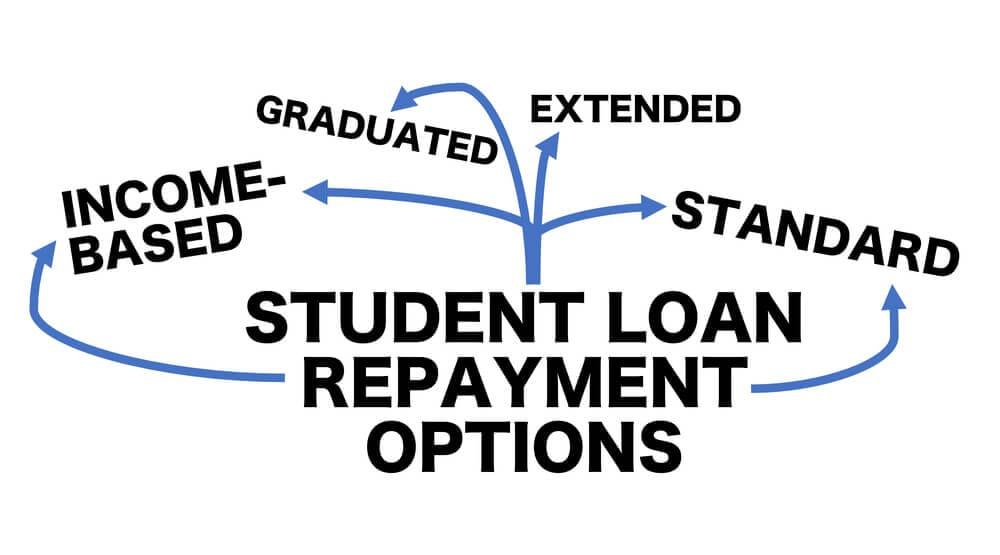
Student Loan Repayment
For many millennials, managing student loans can feel like navigating a maze without a map. With the burden of debt lingering over your financial future, it’s essential to develop a solid repayment strategy. Start by evaluating your loan types—federal loans often offer more flexible repayment options compared to private loans. Understanding your interest rates is crucial, as it allows you to prioritize higher-interest loans for repayment. Consider consolidating or refinancing your loans for potentially better rates, but be aware of the implications these actions may carry, especially for federal benefits.
As you devise your repayment plan, it’s useful to explore various repayment programs available. Here are some popular options to consider:
- Standard Repayment Plan: Fixed payments over 10 years.
- Income-Driven Repayment Plans: Payments are based on your income and family size.
- Pay As You Earn (PAYE): Caps your payments at 10% of your discretionary income.
- Graduated Repayment Plan: Starts with lower payments that increase every two years.
It’s also important to take advantage of any employer-sponsored repayment assistance programs if available. Some companies are stepping up to help lessen the student loan burden, making the work environment a financially friendly one.
| Repayment Option | Duration | Notes |
|---|---|---|
| Standard Plan | 10 years | Fixed monthly payments |
| PAYE | Varies | 10% of discretionary income |
| Graduated Plan | 10 years | Payments start low, increase over time |

Debt-Free Journey
Embarking on a journey to financial freedom begins with understanding where your money goes. Tracking your expenses is an essential first step—this allows you to see spending habits that may be silently sustaining your debt. Start with basic budgeting tactics, and you may find several areas to cut back. Consider the following strategies to take control of your finances:
- Create a strict budget that reflects your income and expenses.
- Prioritize your debts to focus on high-interest ones first.
- Set aside a small emergency fund to avoid accruing new debt during unforeseen circumstances.
- Use any windfalls—tax refunds, bonuses, or side hustle income—to pay down debts.
Moreover, embracing a debt-free mindset involves shifting your perspective on spending and saving. Techniques like the debt snowball method, where you pay off the smallest debts first, can bring a sense of accomplishment that fuels your motivation. To illustrate, here’s a simple breakdown of a hypothetical payment strategy:
| Debt Type | Total Amount | Minimum Payment |
|---|---|---|
| Credit Card A | $500 | $25 |
| Personal Loan | $1,200 | $100 |
| Student Loan | $3,500 | $150 |
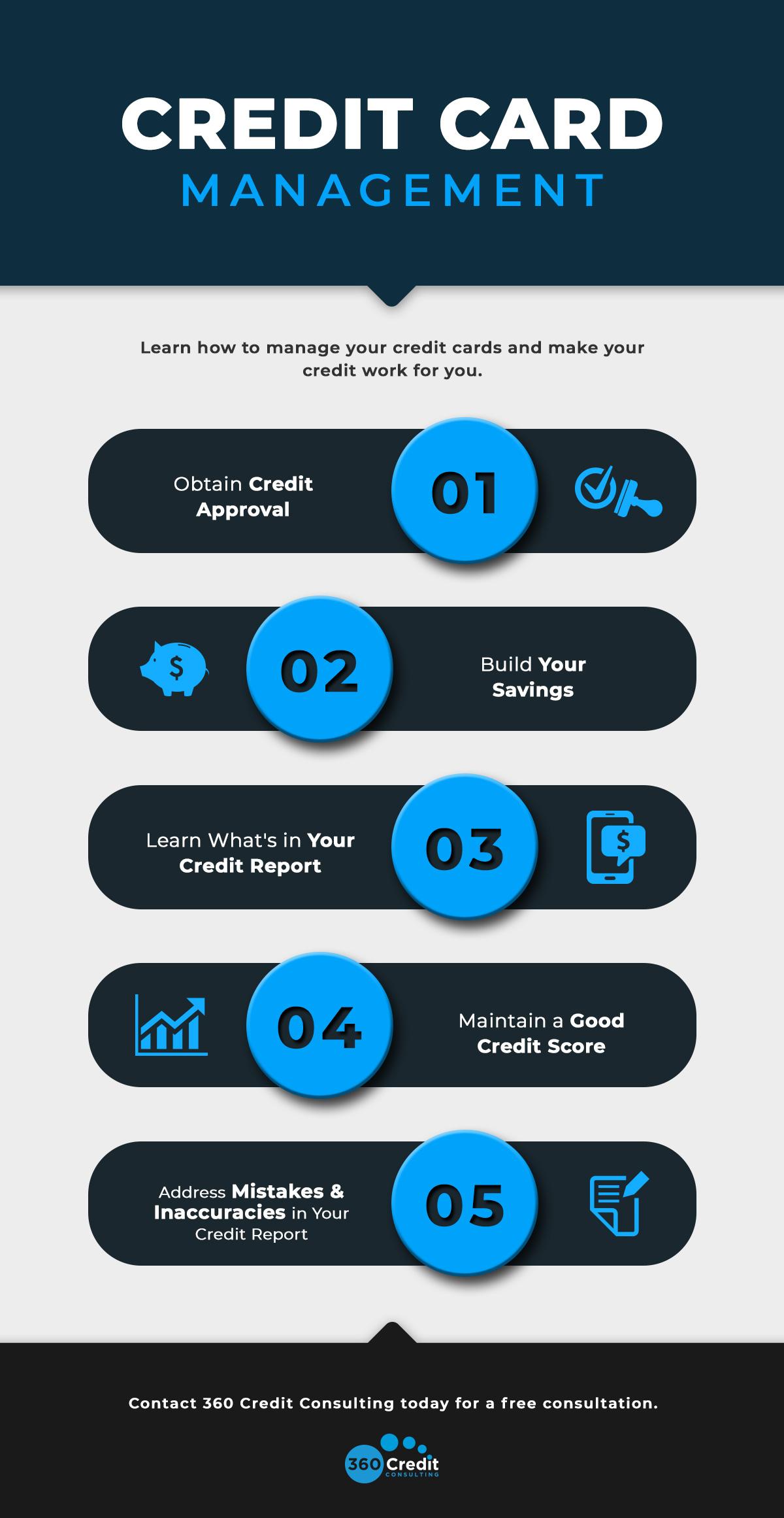
Credit Card Management
Managing credit cards effectively is crucial for maintaining financial health, especially for millennials navigating student loans, rising costs of living, and the diverse pressures of modern life. A few golden rules can help ensure that credit cards serve you well rather than become a source of stress. Start by paying your balance in full each month to avoid unnecessary interest charges, and consider setting up automatic payments to keep everything on track. Moreover, keeping your credit utilization ratio—the amount of credit you’re using compared to your total available credit—under 30% can help maintain a good credit score.
To further enhance your credit management, take advantage of rewards programs that many credit cards offer. Maximizing these benefits can lead to substantial savings over time. Regularly review your statements and transactions to avoid mistakes and monitor for any fraudulent activity. Lastly, don’t hesitate to shop around for credit cards that align with your spending habits—whether it’s travel rewards, cash back, or low-interest offers—as choosing the right card can make a significant difference in your overall financial strategy.
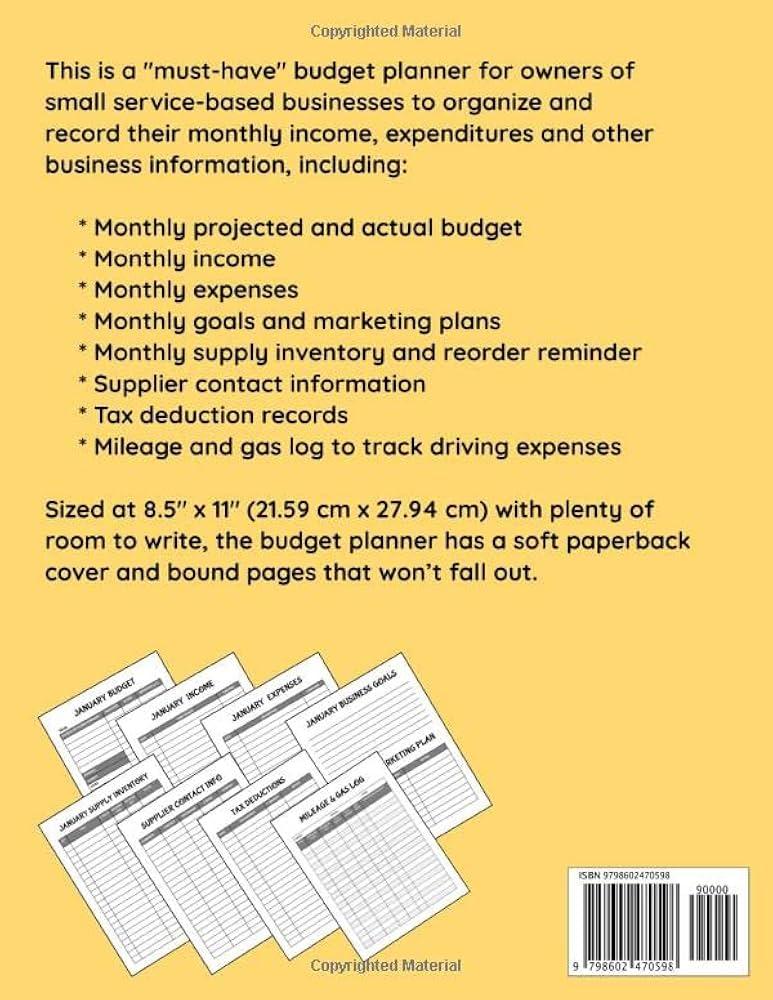
Budgeting for Freelancers
Freelancing offers great freedom, but with that freedom comes the need for smart financial management. Unlike traditional jobs, freelancers often deal with fluctuating income, which makes budgeting essential. Start by tracking your monthly earnings and fix a realistic budget based on average income. It’s wise to categorize your expenses into fixed and variable costs:
- Fixed costs: Rent, insurance, subscriptions
- Variable costs: Groceries, entertainment, supplies
Having a budgeting system doesn’t just keep you afloat; it also allows you to set aside money for taxes and emergency funds. Consider using the 50/30/20 rule to allocate your income effectively: 50% for necessities, 30% for discretionary spending, and 20% for savings. To visualize your spending, you might find a simple table useful:
| Category | Percentage |
|---|---|
| Necessities | 50% |
| Discretionary Spending | 30% |
| Savings | 20% |
Lastly, always re-evaluate your budget periodically. Assess your income after a few months and adjust your categories and percentages accordingly. This will help you remain agile in an ever-changing freelance landscape and ensure you’re prepared for any financial surprises that may come your way.

Frugal Living Tips
Embracing a frugal lifestyle doesn’t mean sacrificing joy; it requires a shift in mindset and creativity. Start by setting clear financial goals that inspire you, then evaluate your monthly expenses. Here are some practical tips to get you on track:
- Cook at Home: Preparing meals at home not only saves money but also encourages healthier eating habits.
- Use Public Transportation: Ditch the car and explore local transit options to reduce gasoline and parking expenses.
- Shop Secondhand: Thrift stores or online marketplaces can yield amazing finds without the premium price tag.
Incorporating minimalism into your routine can also significantly lower your financial burdens. Assess your belongings and prioritize items that truly add value to your life. Consider these strategies:
| Strategy | Benefits |
|---|---|
| Declutter Regularly | Frees up space and reduces the temptation to purchase excess items. |
| Rent Instead of Buy | Save money on items you only need occasionally (tools, party supplies). |
| Use Coupons and Discounts | Maximize savings at grocery stores and online shopping platforms. |

Side Hustles for Extra Income
For those looking to boost their income without abandoning their full-time jobs, exploring side hustles can be a rewarding venture. Here are several options that you might find both fulfilling and profitable:
- Freelance Skills: Offer your expertise in writing, graphic design, or web development on platforms like Upwork and Fiverr.
- Online Tutoring: Share your knowledge in subjects you excel at through websites like Tutor.com or VIPKid.
- E-commerce: Start a small online store on Etsy or eBay, selling handmade crafts or vintage finds.
- Pet Sitting: Use sites like Rover to turn your love for animals into a side income.
- Social Media Management: Help small businesses grow their online presence by managing their social media accounts.
Choosing the right side hustle depends on your interests and available time. To help you visualize potential earnings, here’s a simple overview of popular side hustles and their estimated hourly rates:
| Side Hustle | Estimated Hourly Rate |
|---|---|
| Freelance Writing | $20 – $100 |
| Online Tutoring | $15 – $50 |
| E-commerce Sales | Variable |
| Pet Sitting | $15 – $30 |
| Social Media Management | $15 – $50 |
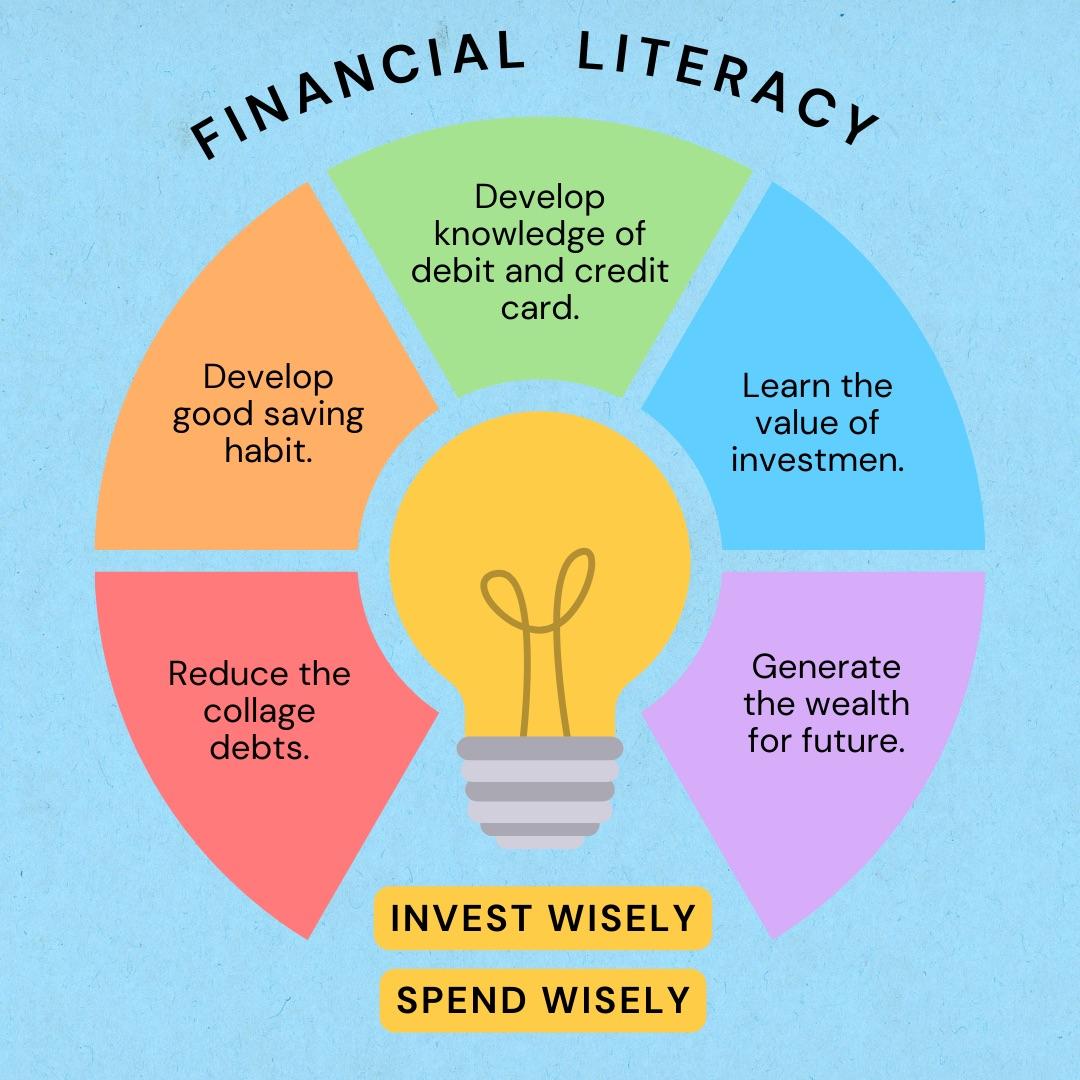
Financial Literacy Education
Understanding personal finance is crucial for millennials, who often navigate a unique set of challenges influenced by student loans, economic instability, and evolving job markets. Building a solid financial foundation helps create security and peace of mind. Here are some essential concepts to master:
- B budgeting: Create a budget that tracks your income and expenses to ensure you live within your means.
- Savings: Aim to save at least 20% of your income for emergencies, retirement, and future goals.
- Investing: Start investing early, even in small amounts, to leverage compound interest over time.
- Understanding Credit: Learn how your credit score works and how it affects your ability to borrow and purchase.
Another critical aspect of financial literacy is setting and pursuing clear financial goals. Millennials should break down larger objectives into achievable milestones. For example, creating a table to choreograph ongoing goals can enhance approachability:
| Goal | Timeline | Status |
|---|---|---|
| Emergency Fund | 6 months | In Progress |
| Pay Off Student Loans | 3 years | On Track |
| Start Retirement Fund | 1 year | Pending |
By taking small, informed steps coupled with continuous education on financial principles, millennials can pave the way for a stable and prosperous financial future.

Insurance Planning
When it comes to safeguarding your financial future, understanding and implementing a robust insurance strategy is essential. As a millennial, you might feel invincible, but unforeseen events can happen at any stage of life. To ensure you’re not caught off guard, consider these key types of insurance:
- Health Insurance: Covers medical expenses and protects against high healthcare costs.
- Life Insurance: Provides financial support to your dependents in the event of your untimely passing.
- Disability Insurance: Offers income replacement in case you cannot work due to disabilities.
- Renter’s Insurance: Protects personal belongings in rental properties and covers liability.
To make informed decisions, it’s crucial to assess both your needs and your budget. A simple approach to could be using a table to evaluate the premiums against the coverage benefits:
| Type of Insurance | Average Monthly Premium | Coverage Benefits |
|---|---|---|
| Health Insurance | $300 | Medical expenses, preventive care |
| Life Insurance | $50 | Death benefit for beneficiaries |
| Disability Insurance | $100 | Income replacement during recovery |
| Renter’s Insurance | $15 | Protection for personal property |
Selecting the right insurance products involves balancing cost with the coverage you actually need. Regularly revisiting your insurance policies ensures they evolve with your financial situation, providing peace of mind and security against life’s uncertainties.

Long-Term Wealth Building
For millennials, the pursuit of wealth isn’t just about making money; it’s about creating a sustainable financial future. Diverse investment strategies offer the potential to grow wealth over time while minimizing risks. Start by considering a mix of stocks, bonds, and real estate for a balanced portfolio. Utilizing tax-advantaged accounts like Roth IRAs or 401(k)s can amplify your savings through tax-free growth. Allocate a portion of your budget to learn about index funds and ETFs, both of which can provide diversified exposure to entire markets or sectors. Keep in mind the power of compound interest—investing early can significantly increase your wealth over the years.
Moreover, building wealth is not solely about investing; it also involves establishing healthy spending habits and an emergency fund. A well-structured budget allows you to differentiate between needs and wants, enabling you to allocate funds wisely. Aim to save at least three to six months’ worth of living expenses to combat financial emergencies without derailing your long-term plans. Consider automating your savings and investments, making it easier to stick to your wealth-building objectives. Stay informed about financial trends and continuously educate yourself, as a well-informed investor is more likely to make choices that align with their financial goals.
| Investment Type | Risk Level | Potential Returns |
|---|---|---|
| Stocks | High | 8-10% annually |
| Bonds | Low to Medium | 3-5% annually |
| Real Estate | Medium | 8-12% annually |

Saving for College
As you navigate the waters of personal finance, establishing a college savings plan is essential for your children’s future. Start early and consider setting aside a specific amount each month to benefit from compounding interest over time. Here are several options to consider:
- 529 Plans: These state-sponsored accounts allow your investment to grow tax-free when used for qualified education expenses.
- Coverdell Education Savings Accounts: Ideal for those looking to contribute smaller amounts over time, while offering tax-free growth for educational purposes.
- Roth IRAs: While primarily intended for retirement, Roth IRAs can serve dual purposes as education savings accounts if you meet eligibility requirements.
To visualize the potential growth of your college savings, consider the following table illustrating contributions over 18 years with a modest annual return:
| Monthly Contribution | Total Contribution | Estimated Value at 6% Return |
|---|---|---|
| $100 | $21,600 | $29,213 |
| $200 | $43,200 | $58,427 |
| $300 | $64,800 | $87,640 |
By committing to a structured savings plan, you not only provide financial support for your future college student but also instill valuable lessons about budgeting and investment. Each decision you make regarding saving can create a profound impact on their educational journey, ensuring they have a brighter future ahead.

Estate Planning
might seem like a distant task for many millennials, but starting early can provide significant long-term benefits. It’s essential to understand that is not just about distributing assets; it’s about securing your future and that of your loved ones. Here are some crucial elements to consider:
- Wills: Outline your wishes regarding asset distribution and guardianship for dependents.
- Trusts: These can help avoid probate and manage how your assets are distributed over time.
- Beneficiary designations: Regularly update these on your accounts to ensure they reflect your current wishes.
- Health care directives: Specify your preferences for medical care in case you become unable to communicate those wishes.
Moreover, millennials are in a unique position where they can leverage technology to streamline their needs. Online tools and services have emerged, making it easier than ever to create documents and manage your estate without substantial legal fees. Consider the following benefits of using digital :
- Accessibility: Create and adjust your plans from the comfort of your home.
- Cost-effective: Online platforms often provide services at a fraction of traditional legal costs.
- User-friendly: Many platforms guide you step-by-step, demystifying legal jargon.
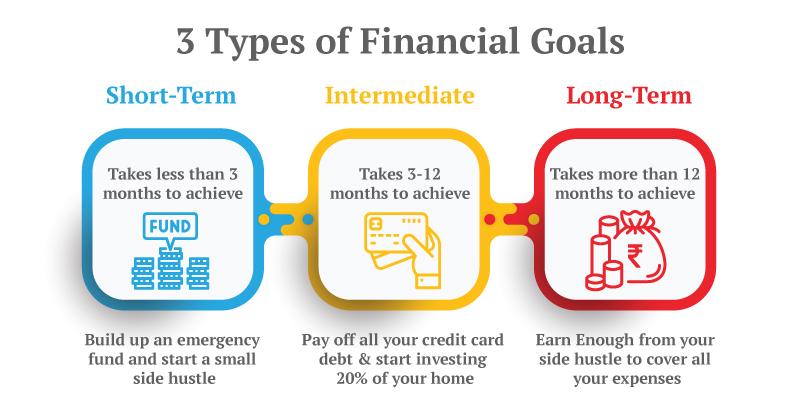
Financial Goals Setting
Setting financial goals is a critical aspect of personal finance that helps clarify what you want to achieve in the short and long term. To start, it’s essential to categorize your goals based on their timeframe. For instance, consider distinguishing between short-term, mid-term, and long-term objectives. This approach provides a structured path and helps in prioritizing your focus. Some common examples of financial goals include:
- Short-term: Building an emergency fund or paying off credit card debt
- Mid-term: Saving for a vacation or a down payment on a house
- Long-term: Planning for retirement or funding a child’s education
Once you’ve identified your goals, create a clear plan of action. Use the SMART criteria to ensure they are Specific, Measurable, Achievable, Relevant, and Time-bound. This clarity enhances your motivation and keeps you accountable. For a more visual approach, consider creating a table to track your progress towards these goals:
| Goal | Amount Needed | Deadline | Progress |
|---|---|---|---|
| Emergency Fund | $5,000 | 12/31/2024 | 40% Complete |
| Vacation Fund | $2,500 | 06/30/2025 | 20% Complete |
| Retirement Savings | $200,000 | 12/31/2050 | 10% Complete |

Money Management for Couples
Combining finances as a couple brings both advantages and challenges. It’s essential to establish clear communication about spending habits, savings goals, and financial priorities. Start by creating a joint budget that encompasses both partners’ income and expenses. This will help you understand each other’s financial situations better and tailor your financial strategies accordingly. Consider discussing the following key components:
- Joint and Individual Expenses: Identify what should be shared and what remains personal.
- Financial Goals: Set short-term and long-term goals together, like saving for a vacation or a home.
- Debt Management: Be transparent about existing debts and strategize on how to tackle them as a team.
Furthermore, establishing regular money dates can ensure you both stay on track and adapt to changes in your financial landscape. These meetings can be fun and constructive, giving both partners a chance to share their thoughts without judgment. To effectively manage your finances, consider using a simple tracking method. A budgeting table may clarify your progress:
| Category | Planned Amount | Actual Amount | Difference |
|---|---|---|---|
| Groceries | $400 | $350 | +$50 |
| Rent | $1,200 | $1,200 | $0 |
| Utilities | $150 | $175 | -$25 |
| Entertainment | $100 | $80 | +$20 |

Family Budgeting
Establishing a family budget is crucial for any millennial seeking financial stability. To start, gather all financial information, including income and expenses. Use the following steps to pave the way toward effective budgeting:
- Track Expenses: Document daily spending to identify patterns.
- Set Priorities: Determine essential expenses (housing, utilities, groceries) versus discretionary spending (entertainment, dining out).
- Create Categories: Organize expenses into clear budget categories to simplify tracking.
Once you have a clear picture of your finances, you can create a dynamic budget that adjusts to your family’s changing needs. Consider the 50/30/20 rule as a foundational guideline:
| Category | Percentage |
|---|---|
| Needs | 50% |
| Wants | 30% |
| Savings/Debt Repayment | 20% |
This structure not only encourages mindfulness in spending but also fosters a commitment to saving and debt reduction over time. Remember to review and update your budget regularly to reflect life changes, ensuring financial goals align with your family’s priorities.

Smart Spending Habits
Understanding how to allocate your income wisely is essential for building a secure financial future. One way to develop is to create a monthly budget that reflects your actual expenses and savings goals. By listing your fixed and variable costs, you can identify areas where you can cut back. Consider using the 50/30/20 rule to structure your budget effectively: allocate 50% for needs, 30% for wants, and 20% for savings and debt repayment. This approach can prevent overspending and helps you prioritize financial security.
Another crucial aspect of effective spending is differentiating between needs and wants. Make it a habit to ask yourself whether a purchase is essential or merely a desire. Incorporate the following strategies into your routine to solidify this mindset:
- Wait Before You Buy: Implement a 24-hour rule on non-essential purchases to assess their importance.
- Track Your Expenses: Use apps or budgeting tools to monitor where your money goes each month.
- Shop Smart: Look for discounts, use coupons, and compare prices before making purchases.
| Category | Percentage of Income |
|---|---|
| Needs | 50% |
| Wants | 30% |
| Savings & Debt | 20% |
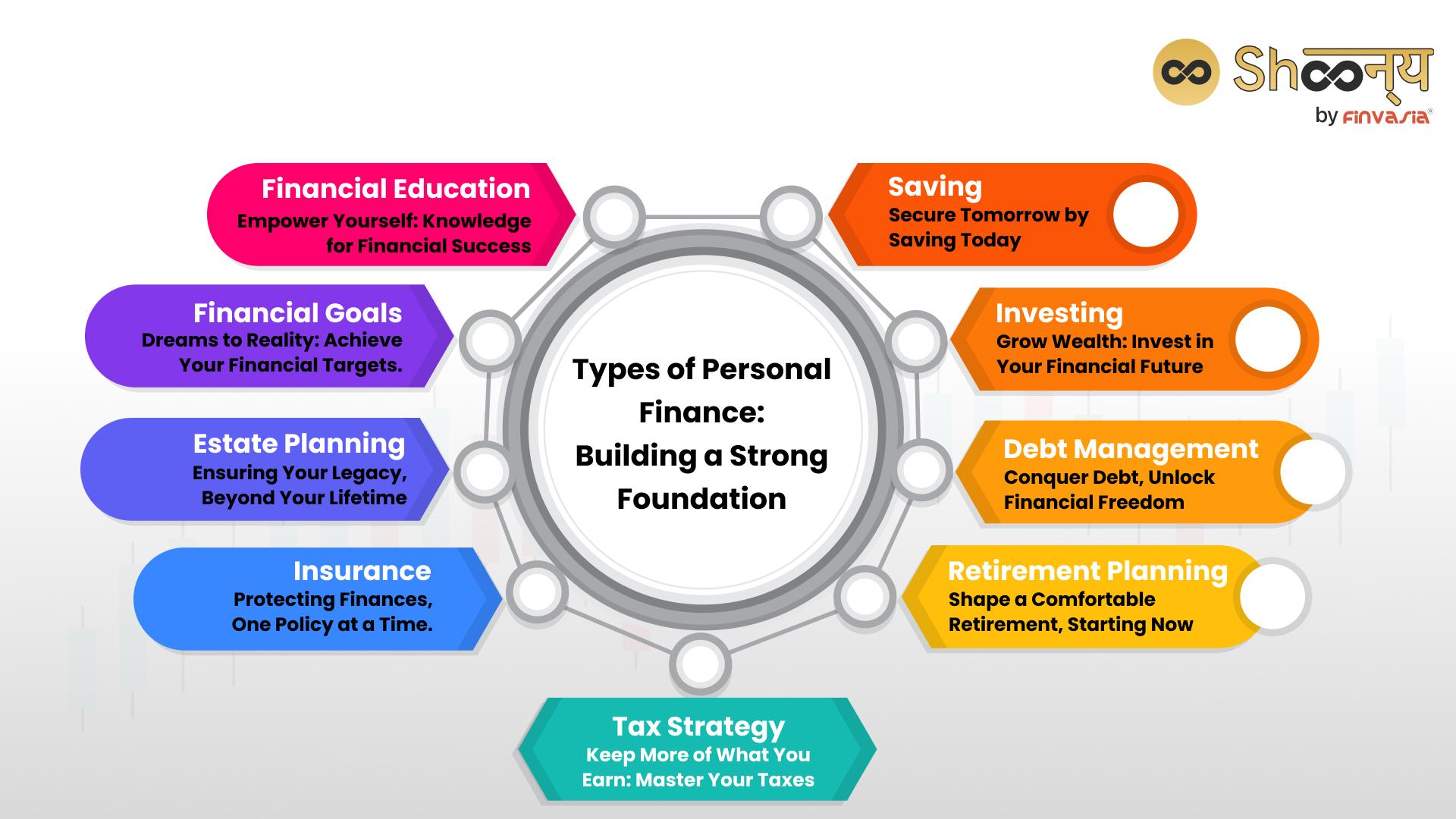
Personal Finance for Millennials
Understanding the landscape of personal finance is crucial for navigating the financial challenges that often accompany adulthood. For millennials, balancing student loans, rising housing costs, and the impulse to enjoy experiences can be daunting. Prioritizing budgeting is essential, as it lays the groundwork for effective financial management. Key strategies include:
- Create a Monthly Budget: Allocate funds to essential expenses, savings, and discretionary spending.
- Track Your Expenses: Use apps or spreadsheets to monitor where your money goes.
- Emergency Fund: Aim for three to six months’ worth of living expenses saved.
Investing is another pivotal aspect that millennials should embrace early on. With the power of compounding interest on their side, even small contributions can grow significantly over time. A well-diversified investment portfolio might include:
| Investment Type | Benefits |
|---|---|
| Stocks | Higher potential returns, ownership in innovative companies. |
| Bonds | Stable income, lower risk compared to stocks. |
| Real Estate | Passive income creation, potential for property value increase. |
| Index Funds | Low fees, diversified exposure to the market. |

Wealth Preservation Strategies
For millennials looking to safeguard their financial future, implementing effective is essential. The volatile economic landscape demands a proactive approach to protect hard-earned assets. Here are several key strategies to consider:
- Diversification: Spread investments across various asset classes, such as stocks, bonds, and real estate, to mitigate risk.
- Emergency Fund: Maintain a fund covering at least 3-6 months of living expenses to cushion against unexpected financial shocks.
- Insurance Coverage: Invest in insurance policies—health, life, and property—to shield against unforeseeable events that could lead to significant financial loss.
Another crucial aspect of wealth preservation is making wise investment choices. Focus on assets that appreciate over time and consider the following options:
| Investment Type | Potential Returns | Risk Level |
|---|---|---|
| Index Funds | 6-10% annually | Moderate |
| Real Estate | 8-12% annually | Moderate to High |
| Cryptocurrencies | Varies widely | High |
By prioritizing wise investments and maintaining a safety net, millennials can create a sturdy foundation for lasting wealth. These strategies not only stabilize finances during turbulent times but also help lay the groundwork for long-term growth and financial well-being.
Insights and Conclusions
As we wrap up our exploration of personal finance for millennials, it’s clear that navigating the financial landscape can feel overwhelming at times. Yet, within this complexity lies a world of opportunity. Armed with the right strategies and an understanding of your financial goals, you can pave the way to a more secure and fulfilling future.
Remember, personal finance is not a one-size-fits-all journey. Each step taken – whether it’s budgeting, saving, or investing – is a reflection of your unique aspirations and circumstances. Embrace the lessons learned, adapt as necessary, and don’t hesitate to seek guidance when needed.
As you move forward, keep the principles of financial literacy close to heart. Balance ambition with prudence, and know that your financial decisions today lay the foundation for tomorrow’s success. Here’s to building not just wealth, but also peace of mind and the freedom to pursue your passions. Your financial journey is just beginning, and every thoughtful decision you make is a step toward unlocking your potential.



